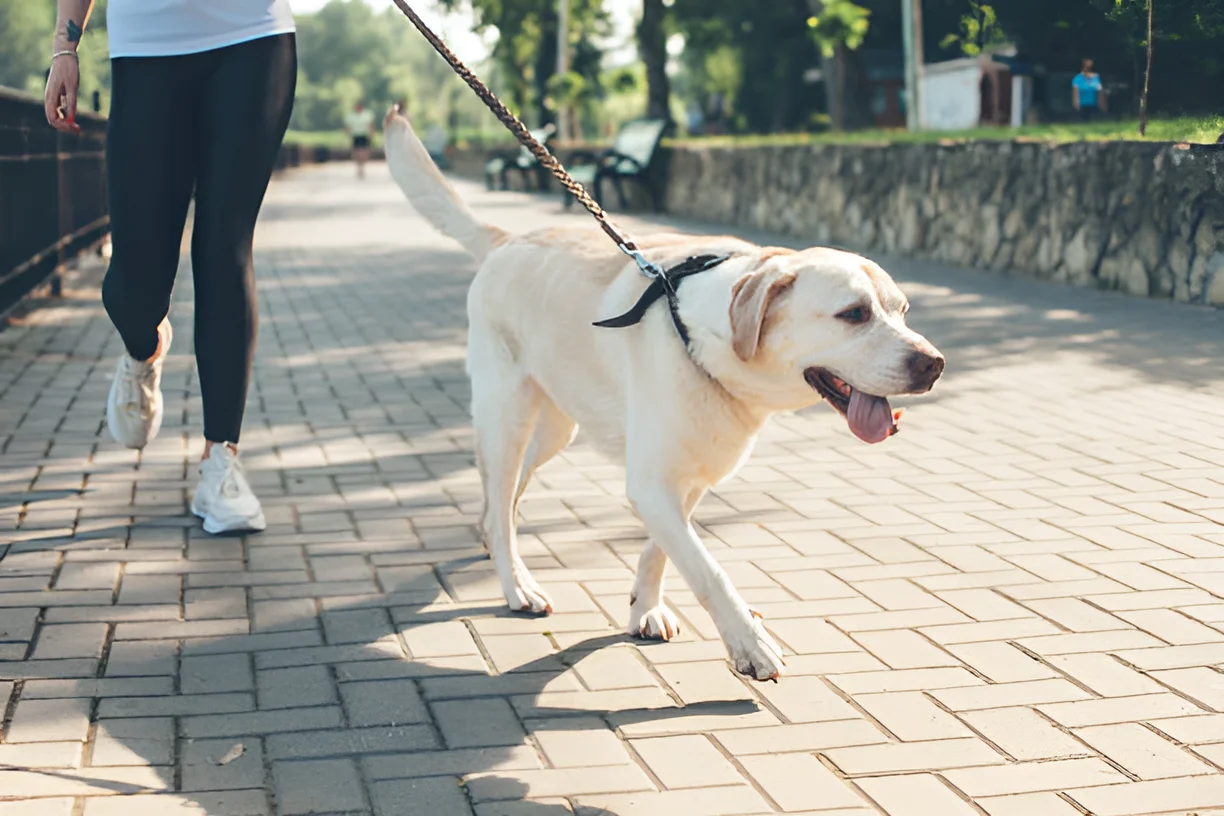Yes, walking on pavement can hurt dogs, especially if the pavement is hot or if the dog has sensitive paws. Understanding the risks and taking preventive measures can help protect your dog’s paws and ensure their comfort and safety.
Walking your dog is a daily routine that provides essential exercise and mental stimulation. However, walking on pavement, particularly in hot weather, can pose significant risks to your dog’s paws. This comprehensive guide will explore the potential dangers of walking dogs on pavement, how to recognize signs of discomfort or injury, and practical tips to protect your dog’s paws. By understanding these factors, you can ensure your dog’s walks are safe and enjoyable.
The Risks of Walking on Pavement
Walking on pavement can expose your dog to several risks, including:
- Heat Burns: Pavement can become extremely hot, causing burns and blisters on your dog’s paw pads.
- Abrasions and Cuts: Rough or uneven pavement can cause abrasions, cuts, and other injuries.
- Joint Stress: Hard surfaces like pavement can put stress on your dog’s joints, particularly in older dogs or those with arthritis.
Heat Burns and Pavement Temperature
Pavement can reach dangerously high temperatures, especially during the summer months. When the air temperature is 86°F, the pavement temperature can soar to 135°F. At this temperature, your dog’s paws can suffer burns within minutes.
The 7-Second Test: To determine if the pavement is too hot for your dog, place the back of your hand on the pavement for seven seconds. If it’s too hot for your hand, it’s too hot for your dog’s paws.
Signs of Burned Paws:
- Redness and swelling
- Blisters or sores
- Limping or reluctance to walk
- Excessive licking or chewing of the paws
Abrasions and Cuts
Pavement can be rough and uneven, leading to abrasions and cuts on your dog’s paws. These injuries can be painful and may become infected if not properly treated.
Preventing Abrasions:
- Regular Paw Checks: Inspect your dog’s paws regularly for any signs of injury.
- Paw Protection: Use dog boots or paw wax to provide a protective barrier against rough surfaces.
Joint Stress
Walking on hard surfaces like pavement can put additional stress on your dog’s joints, particularly in older dogs or those with pre-existing joint conditions.
Reducing Joint Stress:
- Soft Surfaces: Whenever possible, walk your dog on softer surfaces like grass or dirt trails.
- Joint Supplements: Consider giving your dog joint supplements to support their joint health.
- Regular Exercise: Maintain a regular exercise routine to keep your dog’s muscles strong and support their joints.
Practical Tips for Protecting Your Dog’s Paws
To ensure your dog’s paws are protected during walks, follow these practical tips:
- Walk During Cooler Times: Avoid walking your dog during the hottest parts of the day. Opt for early morning or late evening walks when the pavement is cooler.
- Use Protective Gear: Invest in dog boots or paw wax to protect your dog’s paws from hot pavement and rough surfaces.
- Stay on Soft Surfaces: Whenever possible, walk your dog on grass, dirt trails, or other soft surfaces to reduce the risk of burns and abrasions.
- Hydrate and Rest: Ensure your dog stays hydrated and take frequent breaks during walks to prevent overheating and paw fatigue.
- Regular Paw Care: Keep your dog’s nails trimmed and paw pads moisturized to prevent cracks and injuries.
Treating Burned or Injured Paws
If your dog does suffer from burned or injured paws, it’s important to provide prompt and proper care:
First Aid for Burned Paws:
- Cool Water Rinse: Rinse your dog’s paws with cool (not cold) water for 10-15 minutes to soothe the burns.
- Clean and Bandage: Gently clean the affected area with a mild antiseptic and apply a sterile bandage to protect the wound.
- Veterinary Care: Seek veterinary care for severe burns or if your dog shows signs of infection, such as swelling, redness, or discharge.
First Aid for Abrasions and Cuts:
- Clean the Wound: Clean the wound with a mild antiseptic solution to remove dirt and debris.
- Apply an Antiseptic: Apply an antiseptic ointment to prevent infection.
- Bandage the Paw: Bandage the paw to protect the wound and prevent your dog from licking it.
- Monitor for Infection: Keep an eye on the wound for signs of infection and seek veterinary care if necessary.
Conclusion
Yes, walking on pavement can hurt dogs, especially if the pavement is hot or if the dog has sensitive paws. Understanding the risks and taking preventive measures can help protect your dog’s paws and ensure their comfort and safety. By following the guidelines and tips provided in this article, you can make your dog’s walks safe and enjoyable, regardless of the season.
The photo featured below the post headline is Credit: Strelciuc Dumitru/istockphoto
I hope you find this post helpful and informative. If Yes’ feel free to share it with your friends!
Frequently Asked Questions
Does it hurt dogs to walk on pavement?
Yes, walking on pavement can hurt dogs, especially if the pavement is hot or if the dog has sensitive paws.
How can I tell if the pavement is too hot for my dog?
Use the 7-second test: place the back of your hand on the pavement for seven seconds. If it’s too hot for your hand, it’s too hot for your dog’s paws.
What are the signs of burned paws in dogs?
Signs include redness, swelling, blisters, limping, and excessive licking or chewing of the paws.
How can I protect my dog’s paws from hot pavement?
Walk during cooler times, use protective gear like dog boots or paw wax, stay on soft surfaces, and ensure your dog stays hydrated and rested.
What should I do if my dog has burned or injured paws?
Rinse the paws with cool water, clean and bandage the affected area, and seek veterinary care for severe burns or signs of infection.

